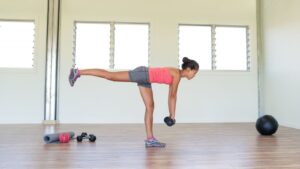Embarking on a fitness journey? Or perhaps you’re a seasoned athlete looking for a refresher on the basics? Either way, you’ve landed in the right place. This article is your one-stop-shop for all things related to basic training tips.
Basic Training Tips
The concept of basic training tips anchors itself in the principle of foundation-building. It champions the initiation of a fitness journey with focus on core training essentials, prior to proceeding to advanced and specialized workouts.
 Basic training holds critical importance in the realm of fitness. It consists of fundamental exercises that work major muscle groups promoting overall strength and balance. By inculcating the habit of simple yet consistent workouts, basic training paves the way for a strong fitness base. In the long run, this readiness helps individuals ace complex exercises without causing injuries, further contributing to better workout performance. For example, individuals accustomed to basic leg exercises like squats and lunges tend to have better performance in advanced workouts like plyometrics.
Basic training holds critical importance in the realm of fitness. It consists of fundamental exercises that work major muscle groups promoting overall strength and balance. By inculcating the habit of simple yet consistent workouts, basic training paves the way for a strong fitness base. In the long run, this readiness helps individuals ace complex exercises without causing injuries, further contributing to better workout performance. For example, individuals accustomed to basic leg exercises like squats and lunges tend to have better performance in advanced workouts like plyometrics.
Distinguishing basic training from advanced training lies in their complexity, directedness, and demanded skill level. Basic training maintains a general focus and includes straightforward exercises, meant to boost overall fitness. For example, push-ups, pull-ups, and jogging form part of this category.
Advantages of Following Basic Training Tips
 Basic training lays the groundwork for all subsequent fitness achievements. Simple exercises like push-ups and squats stimulate various muscle groups while establishing a solid fitness level. For example, squats help to strengthen the lower body and core, improving balance and coordination. Consequently, it creates a positive impact on the overall workout performance.
Basic training lays the groundwork for all subsequent fitness achievements. Simple exercises like push-ups and squats stimulate various muscle groups while establishing a solid fitness level. For example, squats help to strengthen the lower body and core, improving balance and coordination. Consequently, it creates a positive impact on the overall workout performance.
Proper execution of basic training exercises plays a significant role in injury prevention. Basic training routines focus on form and control, contrary to more advanced routines, which can prioritize technique intricacy and weight lifting strength. By prioritizing correct form, basic training reduces stress on the body, mitigating potential injuries. For instance, properly performed lunges help improve musculature around the knees, thus offering injury protection. This preventative approach saves trainees from potential long-term harm and helps to maintain continuous progress in their fitness journey.
Creating a Successful Training Plan
Elements of a Good Basic Training Plan
A helpful basic training blueprint incorporates a selection of essential aspects. First, it must entail a clear breakdown of fitness goals, contributing to a more focused and guided fitness pursuit. Secondly, a balanced mix of workouts guaranteeing optimal body function exemplifies efficiency. For instance, including aerobic exercises, strength training, and flexibility exercises like swimming, weight lifting, and yoga respectively, offer well-rounded fitness.
Exercise frequency forms an integral part of such a plan, with most experts recommending physical activity about three to five times a week. Lastly, a well-structured training plan provides for gradual intensity increases. For example, a beginner may start with lighter weights and fewer reps, then gradually add weight and repetitions as strength and endurance increase.
Adjusting Your Training Plan According to Progress
 Fitness is a dynamic pursuit; therefore, the most effective training plans allow for natural progression. As people advance in their fitness journey, training plans ought to evolve accordingly. Progress validation tools like fitness testing act as effective monitors, notifying individuals when it’s time for changes. If strength gains are evident, for example, by increased ease in lifting certain weights, scaling up would then be necessary.
Fitness is a dynamic pursuit; therefore, the most effective training plans allow for natural progression. As people advance in their fitness journey, training plans ought to evolve accordingly. Progress validation tools like fitness testing act as effective monitors, notifying individuals when it’s time for changes. If strength gains are evident, for example, by increased ease in lifting certain weights, scaling up would then be necessary.
Likewise, if an individual’s endurance improves, as signified by increased stamina during cardio sessions, fitness regimen adjustments become obligatory, such as adding more workout minutes, or intensifying the routines, for instance, by graduating from walking routines to running. Consequently, an adaptable training plan proves instrumental in maintaining fitness progress and momentum.
Boost Performance
Mastering basic training tips is the first step to a strong fitness foundation. It’s not about complexity but rather about perfecting the fundamentals. Transitioning to advanced training should be gradual to boost performance and minimize injury. A successful training plan is one that aligns with personal fitness goals. It should be a balanced mix of workouts with clear objectives, frequency, and intensity.

